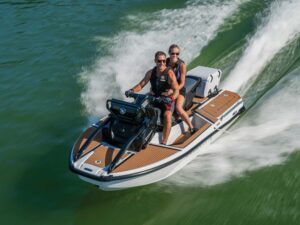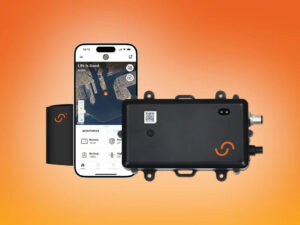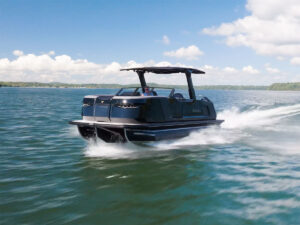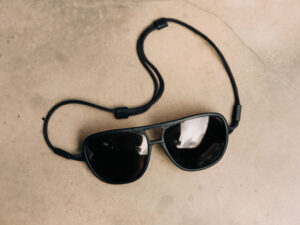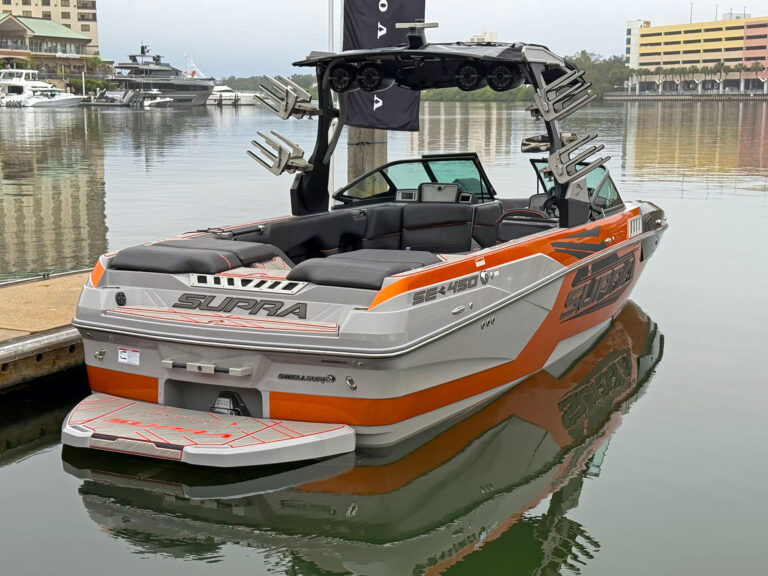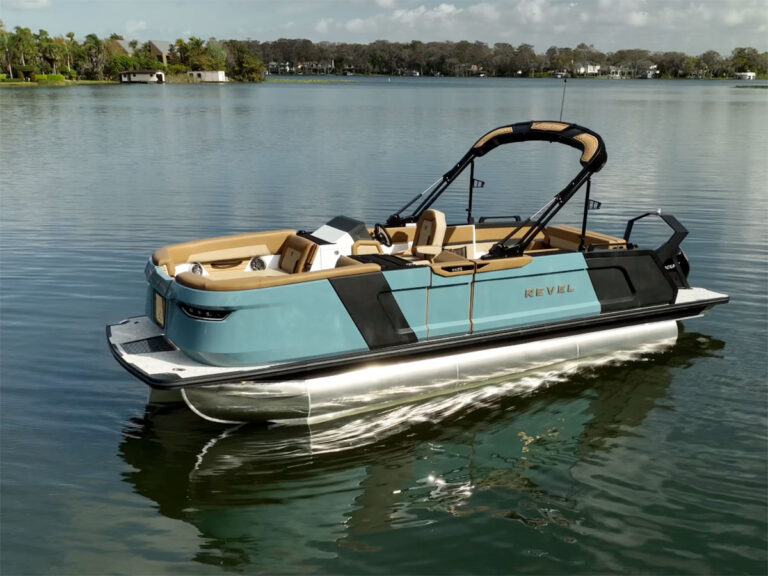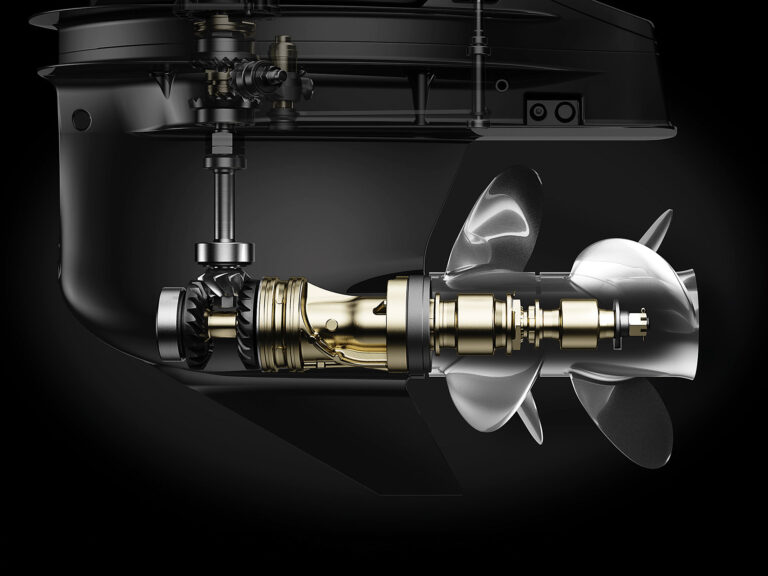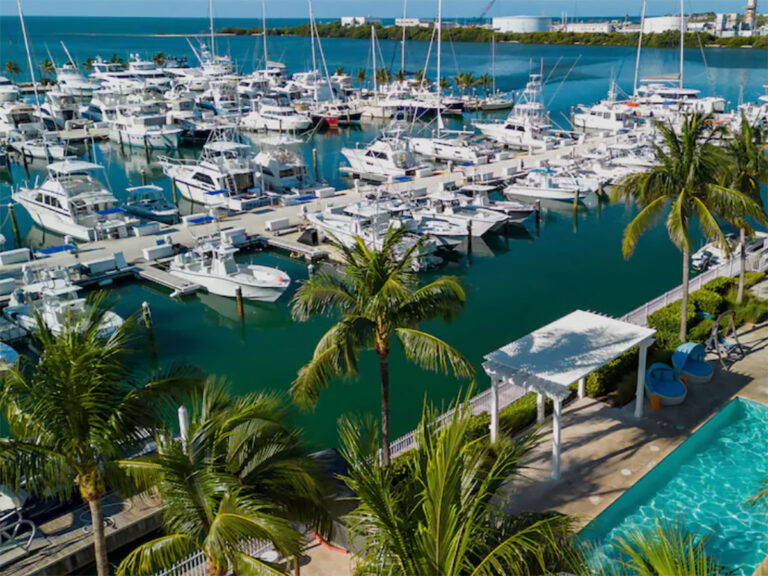Shane McDonald couldn’t look away.
He and his son Jake were on stand-up jet skis, following a 30-foot center console out of Boynton Beach Inlet. Under certain conditions, the south Florida pass opens into a line of breaking surf, and on that particular day the waves just beyond the breakwater looked like something out of a surf movie.
The jet skiers hung back as the boat charged headlong for an incoming set of waves, each larger than the last. They watched as the boat crashed through the first wave, teetered over the second, and then, just as the third wave reached critical mass, turned and tried to outrun it.
Everyone watching could see that wasn’t going to happen.
“I knew this was going to be extremely bad,” said Andrew Nycz, who was filming from a personal watercraft nearby. “Then I saw the wave actually submerge the boat and the boat go over, and I saw how fast it was coming towards the shore . . . at that point, you just have to go try to help as fast as you can.”
The wave overtook the boat from behind, knocking it sideways and surfing it toward shore. Everyone on board was ejected, including two adults, four children and a dog. Only the youngest was wearing a life jacket, and Shane could see it wasn’t doing the child much good. The vest was so loose that it didn’t hold the boy’s head out of the water.
Shane made a beeline for the foundering 3-year-old.
“I wasn’t sure how long he was going to be staying afloat, especially since it seemed like he was about to come out of the life jacket,” says Shane, who was there with fellow members of the Florida Freeriders personal watercraft club. His helmet-mounted camera captured the moment he lifted the boy onto his PWC.
“Hold on!” he said as whitewater washed over them. “Hold on tight!”
The instant the boy was on the ski, Shane gunned the motor, rocketing toward the beach just ahead of the next wave.
As Shane exited the impact zone with the young boy, his son Jake swooped in to assist the other three children, the oldest of whom was about 12. The parents were with the overturned boat, about 40 feet downrange.
“I wasn’t sure how long he was going to be staying afloat, especially since it seemed like he was about to come out of the life jacket.”
– Shane McDonald, Florida Freeriders
“I ran straight in and stopped the jet ski as close to the middle of all the kids as I could,” recalls Jake, who was 16 at the time. “And then the last kid comes up and a dog swims up between her arms.”
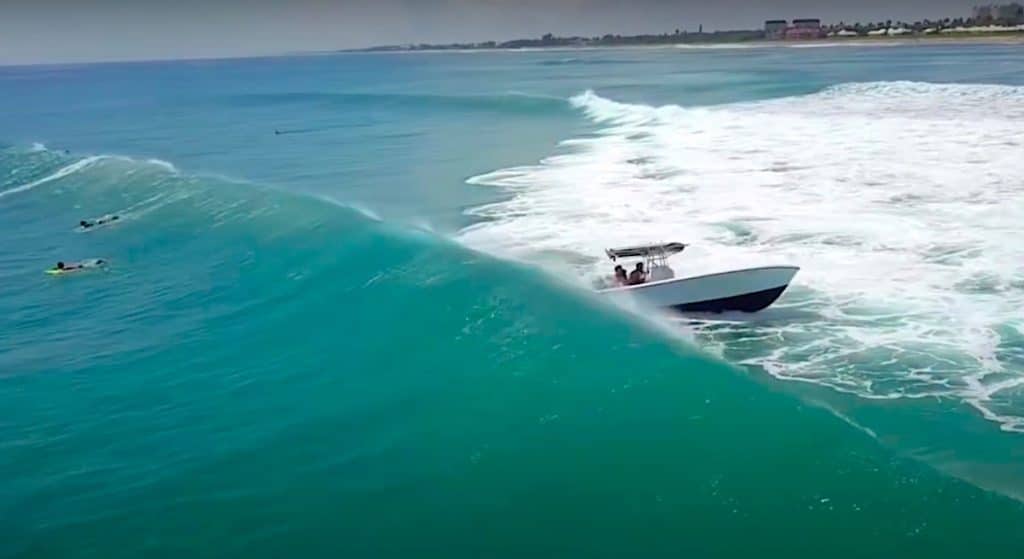
Jake’s stand-up personal watercraft was too small to carry all three kids, so he stayed with them until Andrew could safely bring his larger sit-down PWC close enough to evacuate them. As a former lifeguard, Andrew knows the first rule of rescue is not to compound the problem. “When you first see an emergency situation you just want to run in and help, but sometimes you have to pump the brakes for a second,” he says.
Andrew waited about 30 seconds for a lull in the surf, and then gathered all three kids and the dog onto his PWC. Within minutes he was transferring them to a Sea Tow boat waiting outside the surf zone. Then, after a careful head-count to make sure all six family members were safe and accounted for, the Florida Freeriders went back to playing in the waves.
For the crew of experienced riders on high-performance watercraft, conditions couldn’t have been better. “We’re talking crystal clear blue, aqua looking waves, like Hawaii pipeline type stuff,” Andrew says. “That’s the stuff that we live for.”
It was a perfect day for surfers and personal watercraft, but incredibly challenging for boats attempting to exit the pass. “It was it was really a great day for us, but when you’re thinking about taking a boat out the inlet, you’ve got to get past that perfectly breaking wave. And that’s a lot of energy coming over the top of that wave.”
That’s why it’s important to know your limits, and understand the capabilities of your craft. The other lesson is summed up in the picture of the little boy on Shane’s ski, with his life jacket pulled nearly over his head.
Drowning is the leading cause of death in boating accidents, and 86 percent of victims in 2021 were not wearing life jackets. We know that life jackets save lives, but the image of that child in the surf reminds all of us that life jackets can only do their job when they fit properly.

